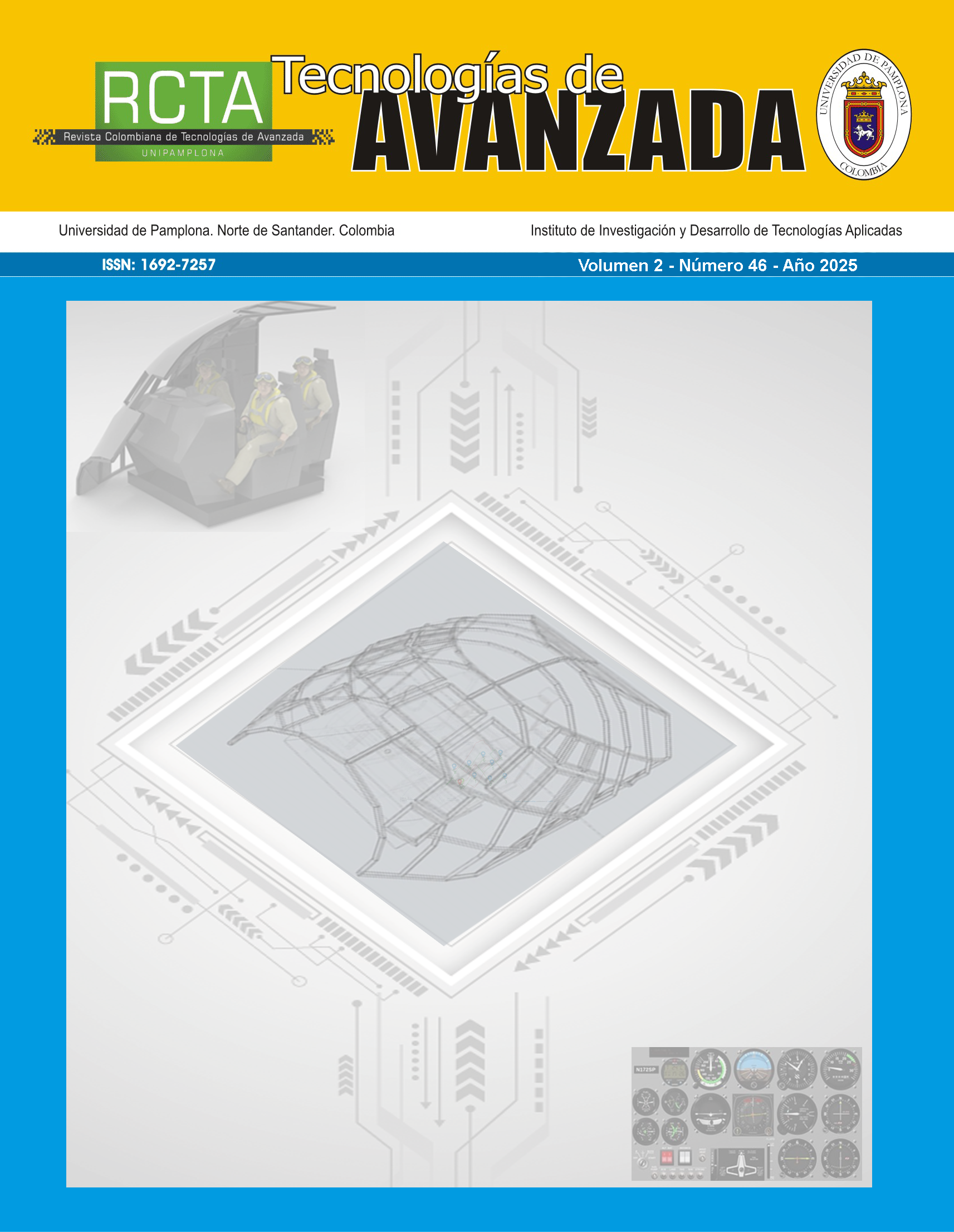Wifish: IoT and cloud computing-based aquaculture monitoring platform with AES-128 encryption
DOI:
https://doi.org/10.24054/rcta.v2i46.4140Keywords:
Internet of Things, Environmental Monitoring, Cloud computing, Aquatic ecosystems, Aquaculture, Data Security, Wireless securityAbstract
The primary objective of this research is to enhance aquaculture management by developing an intelligent system that overcomes the inefficiencies of traditional water quality monitoring. This study introduces and validates WiFish, a comprehensive solution designed for real-time supervision of aquatic parameters across various scales of operation, from small test aquariums to large commercial fish farms. The methodology is founded on an Internet of Things framework, utilizing ESP32 microcontrollers integrated with high-precision sensors to continuously measure water pH, temperature, and salinity. All collected data is secured with AES-128 encryption and transmitted via Wi-Fi to a Huawei Cloud DataArts Studio infrastructure for advanced processing, storage, and analysis. Remote access for monitoring and alerts is provided through a custom mobile application and a Telegram bot. Empirical testing in operational aquaculture environments yielded significant results, demonstrating a 98 percent accuracy rate in measurements. The system's implementation led to a 75 percent reduction in the need for manual supervision and an optimization of resource consumption, including a 30 percent decrease in feed and chemical usage. The principal benefit is that WiFish represents a scalable, secure, and highly effective platform that boosts productivity and promotes sustainability. It successfully proves that integrating secure cloud computing and Internet of Things technology can profoundly transform water resource management in the modern aquaculture industry.
Downloads
References
G. M. Vega, “Desarrollo de un sistema de monitoreo meteorológico de bajo costo basado en tecnología IoT.,” 2024.
A. Dubey and S. K. Yadav, “Basics of Internet of Things,” INTERANTIONAL JOURNAL OF SCIENTIFIC RESEARCH IN ENGINEERING AND MANAGEMENT, vol. 08, no. 10, pp. 1–6, Oct. 2024, doi: 10.55041/ijsrem37970.
A. Alshami, E. Ali, M. Elsayed, A. E. E. Eltoukhy, and T. Zayed, “IoT Innovations in Sustainable Water and Wastewater Management and Water Quality Monitoring: A Comprehensive Review of Advancements, Implications, and Future Directions,” IEEE Access, vol. 12, pp. 58427–58453, 2024, doi: 10.1109/ACCESS.2024.3392573.
F. Cuzme-Rodríguez, “Intelligent Monitoring System for fry rearing using Fuzzy Logic.”
G. A. Lopez-Ramirez and A. Aragon-Zavala, “Wireless Sensor Networks for Water Quality Monitoring: A Comprehensive Review,” IEEE Access, vol. 11, pp. 95120–95142, 2023, doi: 10.1109/ACCESS.2023.3308905.
K. L. Tsai, Y. L. Huang, F. Y. Leu, I. You, Y. L. Huang, and C. H. Tsai, “AES-128 based secure low power communication for LoRaWAN IoT environments,” IEEE Access, vol. 6, pp. 45325–45334, Jul. 2018, doi: 10.1109/ACCESS.2018.2852563.
M. Armbrust et al., “A view of cloud computing,” Apr. 01, 2010. doi: 10.1145/1721654.1721672.
P. Trunfio, “Infrastructures for high-performance computing: Cloud computing,” in Encyclopedia of Bioinformatics and Computational Biology: ABC of Bioinformatics, vol. 1–3, Elsevier, 2018, pp. 236–239. doi: 10.1016/B978-0-12-809633-8.20373-7.
S. Dave, S. Nadukuru, S. Singiri, O. Goel, O. Tharan, and A. Jain, “Scalable Microservices for Cloud Based Distributed Systems,” DIRA, vol. 12, no. 3, pp. 776–809, 2024.
D. C. Decimavilla-Alarcón and P. Fernando Marcillo-Franco, “CONTAINER-BASED MICROSERVICES ARCHITECTURE FOR AGILE DEPLOYMENT OF IOT APPLICATIONS IN THE CLOUD.” [Online]. Available: https://orcid.org/0000-0002-0375-0216
B. Barua and M. S. Kaiser, “A Methodical Framework for Integrating Serverless Cloud Computing into Microservice Architectures,” Oct. 07, 2024. doi: 10.20944/preprints202410.0494.v1.
W. Khuen Cheng, J. Cheng Khor, W. Zheng Liew, K. Thye Bea, and Y. L. Chen, “Integration of Federated Learning and Edge-Cloud Platform for Precision Aquaculture,” IEEE Access, vol. 12, pp. 124974–124989, 2024, doi: 10.1109/ACCESS.2024.3454057.
L. Bo, Y. Liu, Z. Zhang, D. Zhu, and Y. Wang, “Research on an Online Monitoring System for Efficient and Accurate Monitoring of Mine Water,” IEEE Access, vol. 10, pp. 18743–18756, 2022, doi: 10.1109/ACCESS.2022.3151244.
L. Manjakkal et al., “Connected Sensors, Innovative Sensor Deployment, and Intelligent Data Analysis for Online Water Quality Monitoring,” Sep. 15, 2021, Institute of Electrical and Electronics Engineers Inc. doi: 10.1109/JIOT.2021.3081772.
A. Jehangir, S. M. Majid Ashraf, R. Amin Khalil, and N. Saeed, “ISAC-Enabled Underwater IoT Network Localization: Overcoming Asynchrony, Mobility, and Stratification Issues,” IEEE Open Journal of the Communications Society, vol. 5, pp. 3277–3288, 2024, doi: 10.1109/OJCOMS.2024.3401745.
N. Adam, M. Ali, F. Naeem, A. S. Ghazy, and G. Kaddoum, “State-of-the-Art Security Schemes for the Internet of Underwater Things: A Holistic Survey,” IEEE Open Journal of the Communications Society, vol. 5, pp. 6561–6592, 2024, doi: 10.1109/OJCOMS.2024.3474290.
Y. B. Lin and H. C. Tseng, “FishTalk: An IoT-Based Mini Aquarium System,” IEEE Access, vol. 7, pp. 35457–35469, 2019, doi: 10.1109/ACCESS.2019.2905017.
Downloads
Published
How to Cite
Issue
Section
License
Copyright (c) 2025 Andrés Joshue Cuenca Luna, Rony David Quelal Villarreal, Fabricio Sebastián Donoso Martínez, Fabián Geovanny Cuzme Rodríguez, Pablo David Muñoz Criollo

This work is licensed under a Creative Commons Attribution-NonCommercial 4.0 International License.















